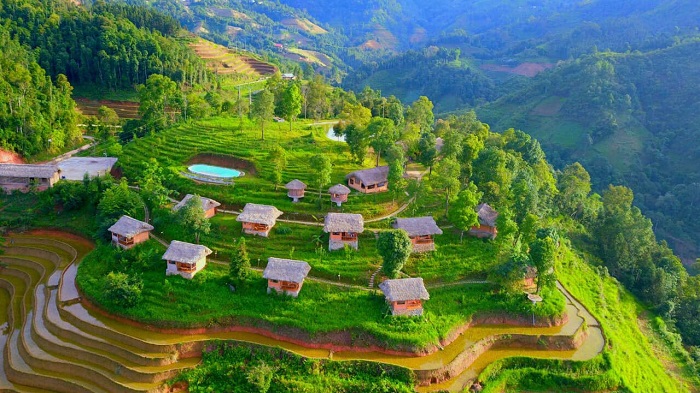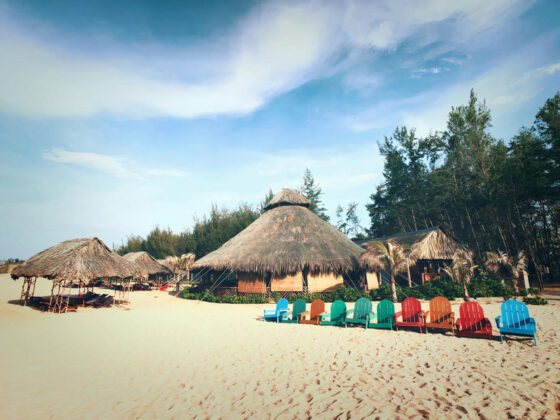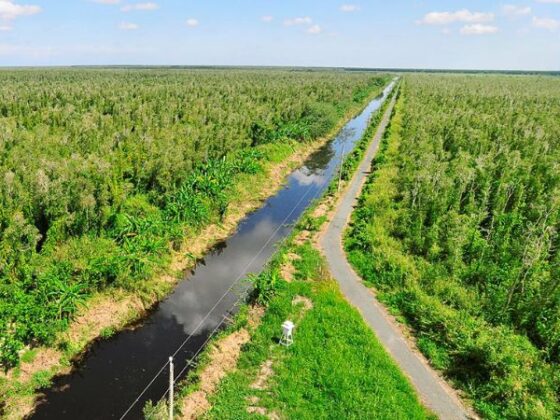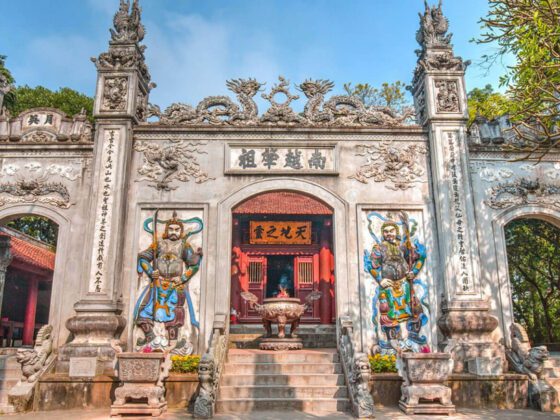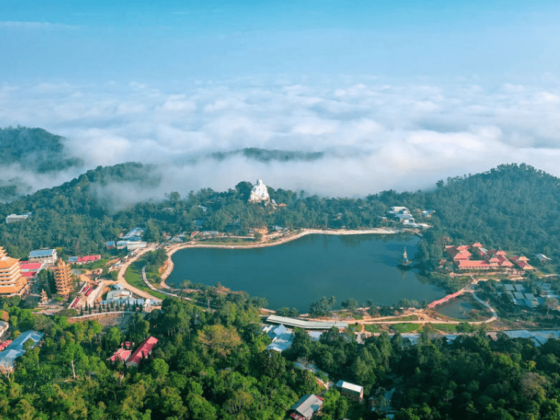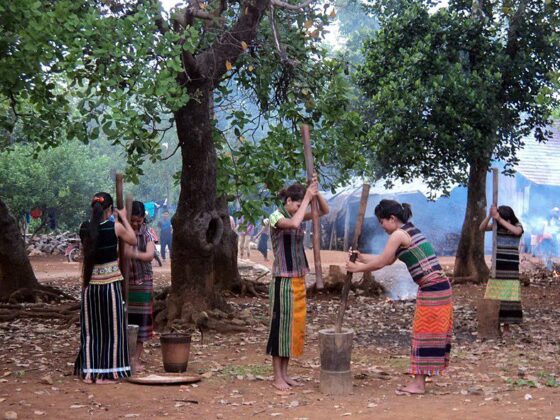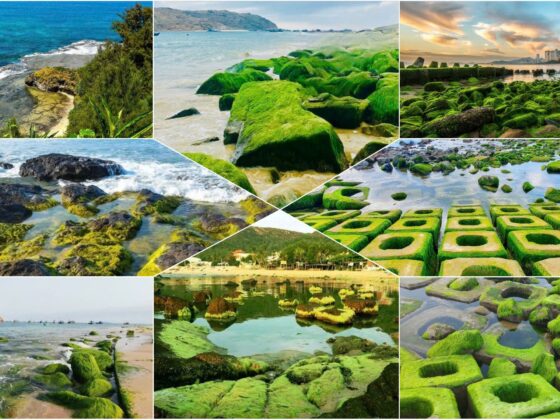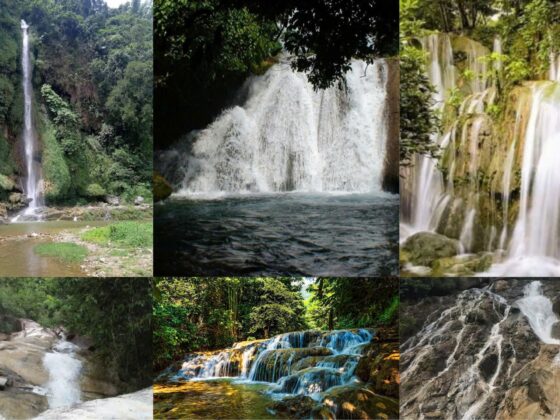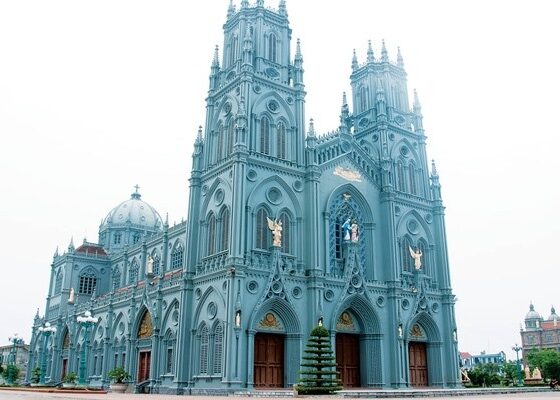Table of Contents Show
Experience the soul of Northern Vietnam with a Hoàng Su Phì homestay, where breathtaking rice terraces meet ancient tea traditions. This guide takes you deep into the mountains of Hà Giang Province to explore the rich culture of the Dao and Nùng people, while discovering the region’s timeless connection to the land and its warm, welcoming hospitality.
Read more interesting posts here:
- Beyond the Feed: Why Trails Are the Best Digital Detox Activities
- The 2-Hour Rule: Finding Accessible Nature Trails in Vietnam
- More Than a Tent: How Glamping Became My Favorite Mindful Travel Experiences
The Timeless Beauty of Hoàng Su Phì’s Landscape
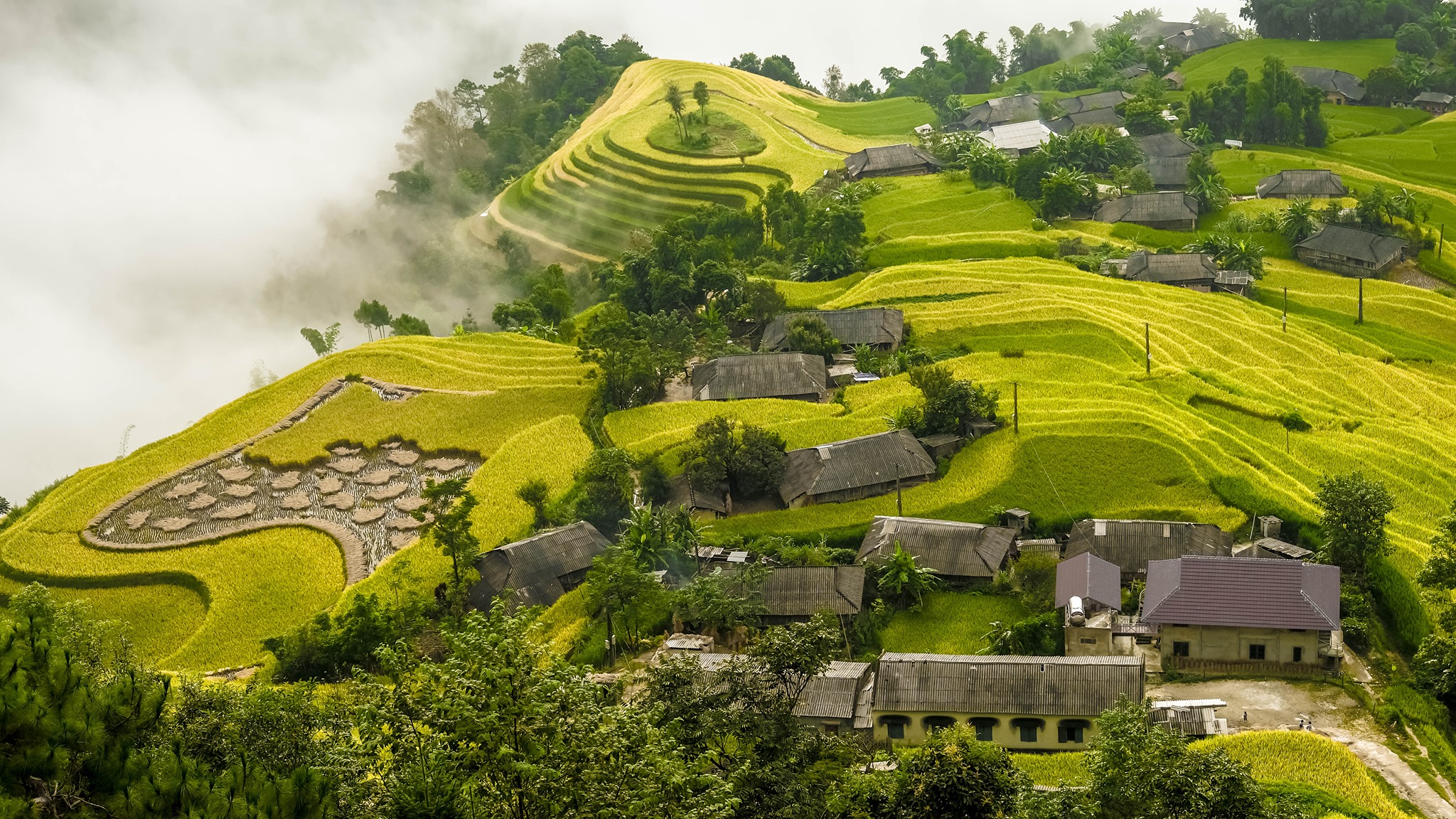
Some landscapes seem designed to slow your steps, inviting you to linger. Hoàng Su Phì, in Hà Giang Province, is one such place. Here, the hills ripple with rice terraces carved over centuries, and ancient tea plants cling to misty ridges where the air tastes clean and sharp. Life moves with the rhythm of planting and harvest, and to stay in a stilt-house Hoàng Su Phì homestay is to join that rhythm, if only for a few days.
The journey itself is part of the adventure. From Hà Giang City, the road winds high into mountains where clouds hang low and rivers slice deep valleys. The air cools as you climb, and soon the famous terraces appear: endless green stairways rising from the valley floor, curving gracefully around the hillsides. Depending on the season, they shine golden at harvest, shimmer like mirrors when freshly planted, or glow with the lush green of growing rice. Each view feels like stepping into a painting, a scene often enjoyed from a Hoàng Su Phì homestay.
The homestay experience: Warmth beyond comfort at your Hoàng Su Phì homestay
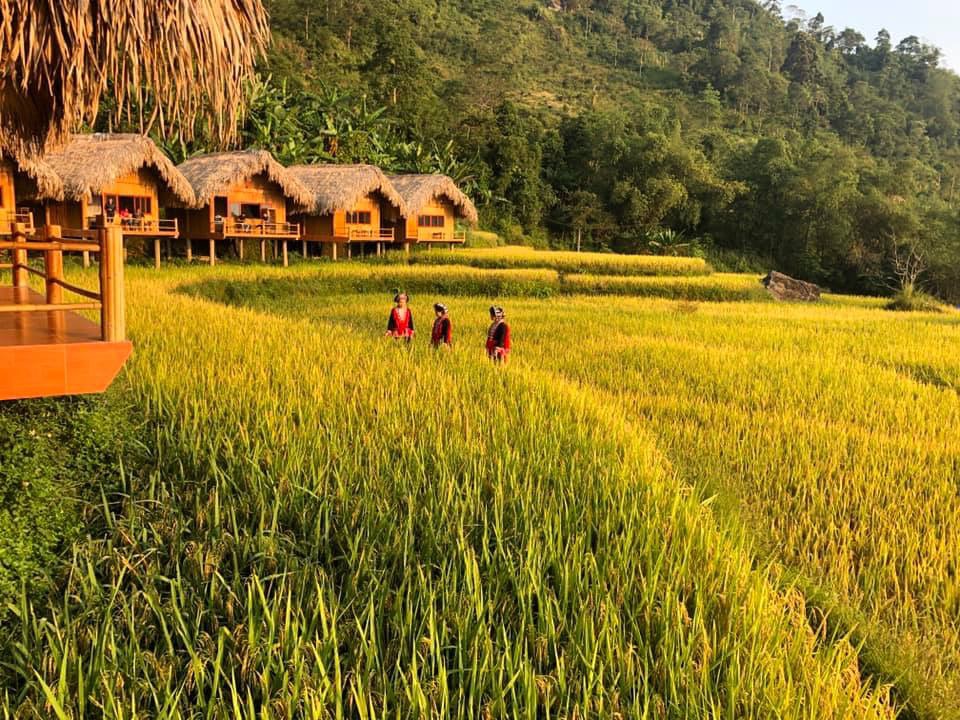
Staying in a homestay here means entering not just a house but a way of life. The stilt houses of the Dao and Nùng people perch above the earth on wooden pillars, their bamboo floors creaking softly underfoot. Nights are simple, mattresses laid out beneath mosquito nets, the air filled with the scent of wood smoke from the kitchen below. But what they lack in luxury, they more than make up for in warmth. Families welcome travelers as guests, not clients, often sharing stories by the fire over cups of hot green tea, making every Hoàng Su Phì homestay a truly personal experience.
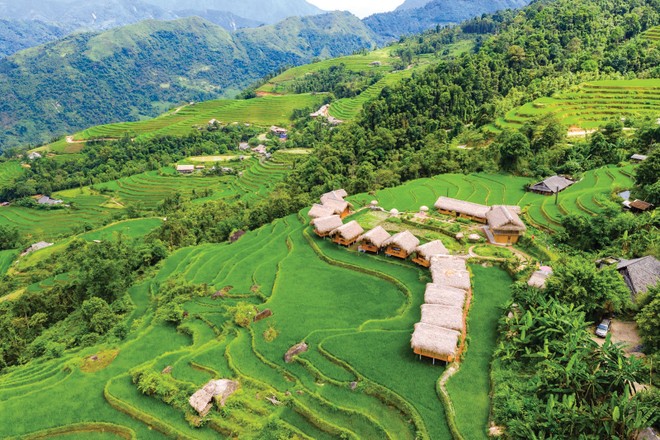
Tea is as much a part of Hoàng Su Phì as rice. The region is famous for its Shan Tuyết tea, ancient tea trees that grow high in the mountains, some over 200 to 300 years old. Their origins trace back to when ethnic groups like the Dao and H’Mông settled these highlands, bringing with them knowledge of cultivating and harvesting tea from wild trees.
Over generations, these practices became deeply rooted in the culture, turning tea into both livelihood and tradition. The leaves, covered in a delicate white fuzz, brew into a cup that tastes of mist and mountain earth, strong yet smooth. Drinking tea here is not rushed, it is a ceremony and conversation, a way to connect across languages and cultures, often enjoyed as part of your Hoàng Su Phì homestay experience.
The history behind the terraces, a highlight of any Hoàng Su Phì homestay visit
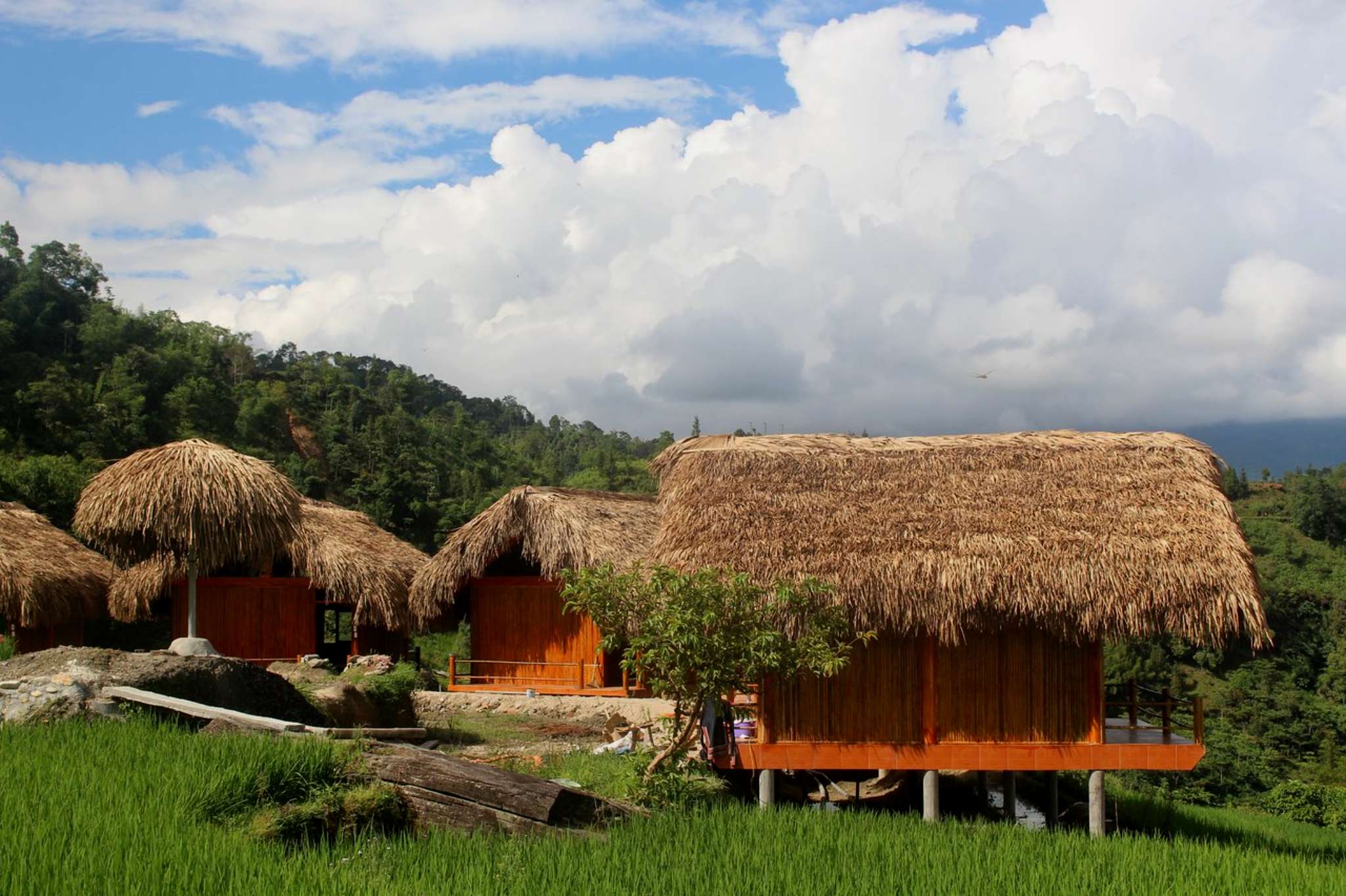
Rice cultivation has an equally deep history. The terraces that shape Hoàng Su Phì were carved more than 300 years ago by the La Chí, Dao, and Nùng people, transforming steep, forested hills into fertile steps. Each terrace represents generations of labor, stones carried by hand, water channels dug from streams, soil tended season after season. These terraces are more than fields; they are living monuments to resilience, sustaining communities in one of Vietnam’s most rugged regions. Today, they are recognized as a national heritage landscape, celebrated not just for their beauty but for the cultural knowledge they embody, visible from nearly every Hoàng Su Phì homestay.
Daily life and exploration from your Hoàng Su Phì homestay
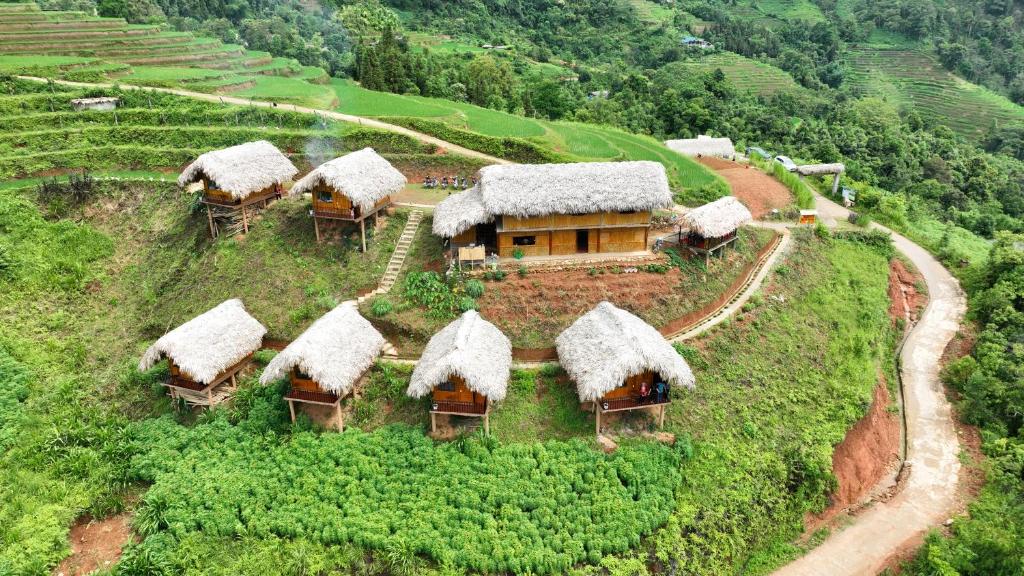
Days in Hoàng Su Phì are made for exploration. Treks take you through terraced valleys, past streams where water wheels creak steadily, turning to irrigate the fields. Children wave from the paths, their laughter echoing between hills. In the evenings, you might join families in preparing simple but delicious meals: sticky rice steamed in bamboo tubes, mountain vegetables stir-fried with garlic, or chicken raised in the backyard. Meals are shared communally, often with a small cup of corn or rice wine to toast the day, enhancing your Hoàng Su Phì homestay experience.
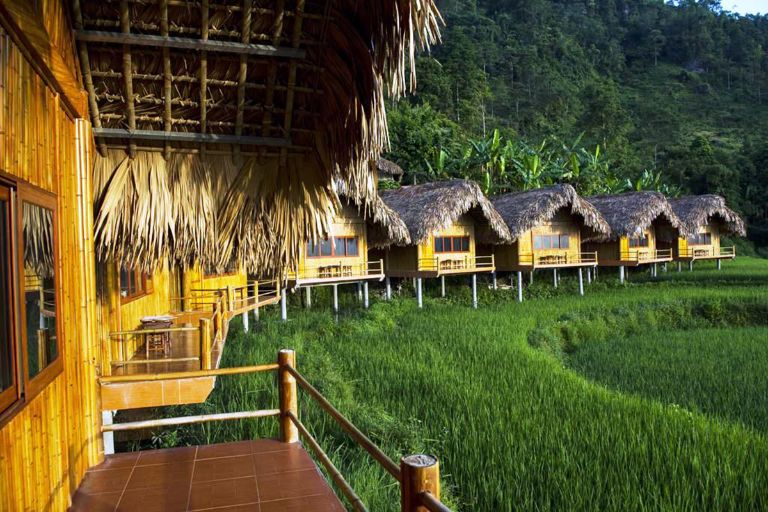
The physical experience of trekking here is moderate, trails wind through terraces and climb into higher ridges, but they are accessible for most travelers. The effort is always rewarded: a view of endless terraces cascading into valleys, or a quiet tea farm perched above the clouds. Along the way, you feel not just like a visitor, but like someone briefly folded into the daily life of the mountains.
A journey of reflection and connection at a Hoàng Su Phì homestay
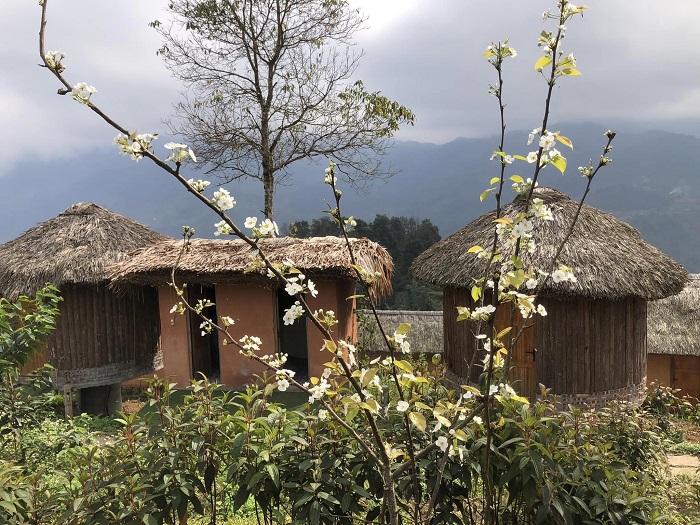
At night, lying under a mosquito net while crickets sing outside, you realize that adventure does not always mean chasing peaks or rapids. Sometimes, it means learning to sit still, to taste tea slowly, to watch mist gather and lift from terraces that have shaped generations, experiences deeply felt at a Hoàng Su Phì homestay.
When I left Hoàng Su Phì, the terraces curved behind me like waves frozen in green, and the taste of tea lingered on my tongue. What I carried most was not the views, though they were unforgettable, but the warmth of families who opened their homes, and the quiet lesson that sometimes the greatest journeys are measured not in distance, but in hospitality shared across a wooden floor, the true magic of a Hoàng Su Phì homestay.
Conclusion
Choosing a Hoàng Su Phì homestay is more than a travel experience, it’s a journey into the cultural heart of Northern Vietnam. From the breathtaking terraces to the timeless rituals of Shan Tuyết tea, every moment connects you to the land and its people.
As you leave, you carry not just memories of landscapes, but a deeper appreciation for traditions that have endured for centuries. A visit here reminds us that travel is not just about seeing places, it’s about being part of a story that is still unfolding.
Join our community of explorers in the ExoTrails Facebook Group and follow the ExoTrails Fanpage for daily inspiration and trail tips!
FAQs
What is Hoàng Su Phì famous for?
Hoàng Su Phì is famous for its stunning rice terraces, ancient Shan Tuyết tea trees, and the vibrant cultures of its ethnic minority groups.
Is Hoàng Su Phì worth visiting?
Yes, Hoàng Su Phì is absolutely worth visiting for its unique landscapes, rich cultural immersion through homestay experiences, and authentic rural Vietnamese life.
When is the best season to see the rice terraces in Hoàng Su Phì?
The best seasons to see the rice terraces in Hoàng Su Phì are during the planting season (May-June) when they shimmer like mirrors, and the harvest season (September-October) when they glow golden.
What is it like to stay in a homestay in Ha Giang?
Staying in a homestay in Ha Giang offers a warm, authentic cultural experience with simple accommodations, shared meals, and direct interaction with local families.
What ethnic groups live in Hoàng Su Phì?
Hoàng Su Phì is home to several ethnic groups, primarily the Dao, Nùng, and La Chí, whose cultures are integral to the region’s traditions.

